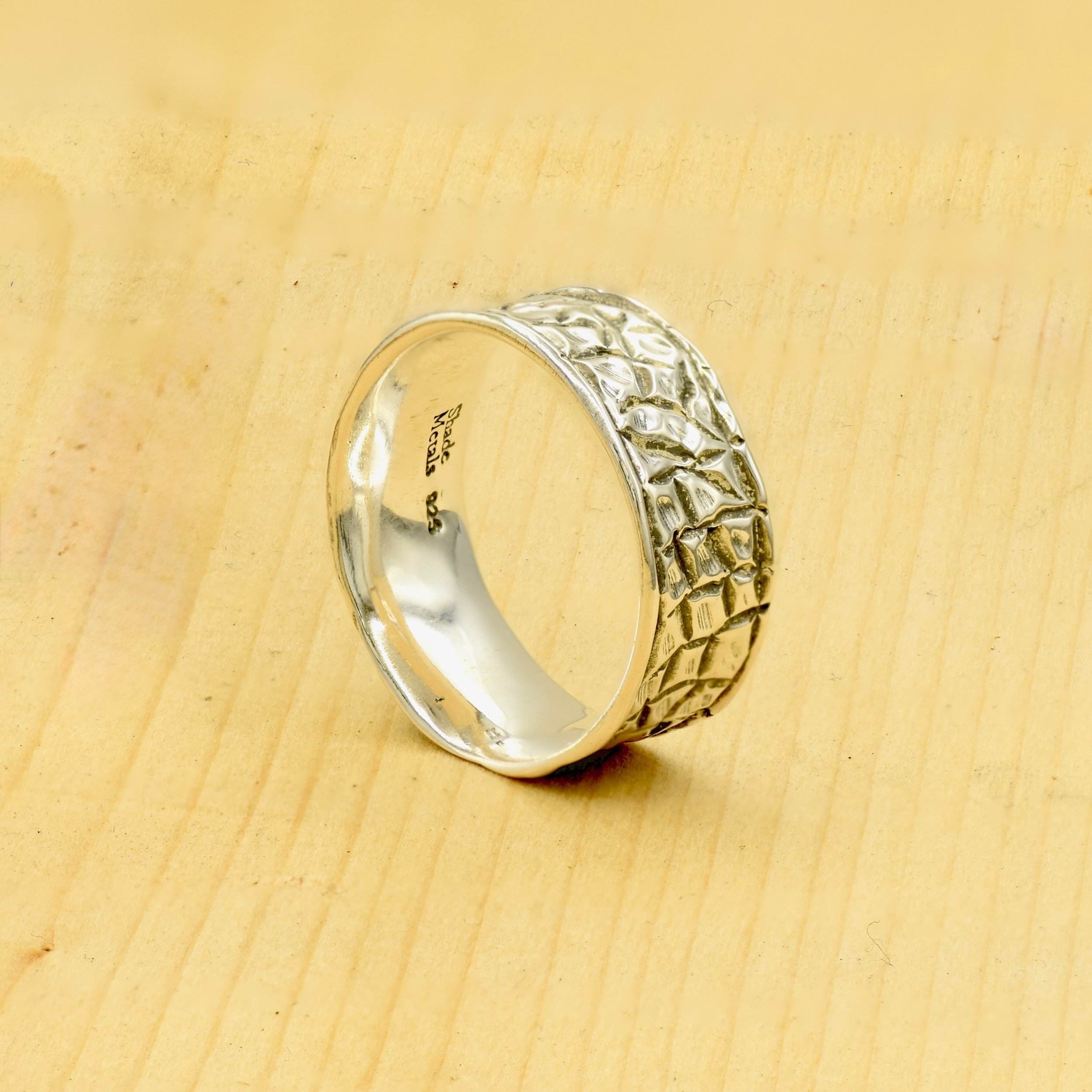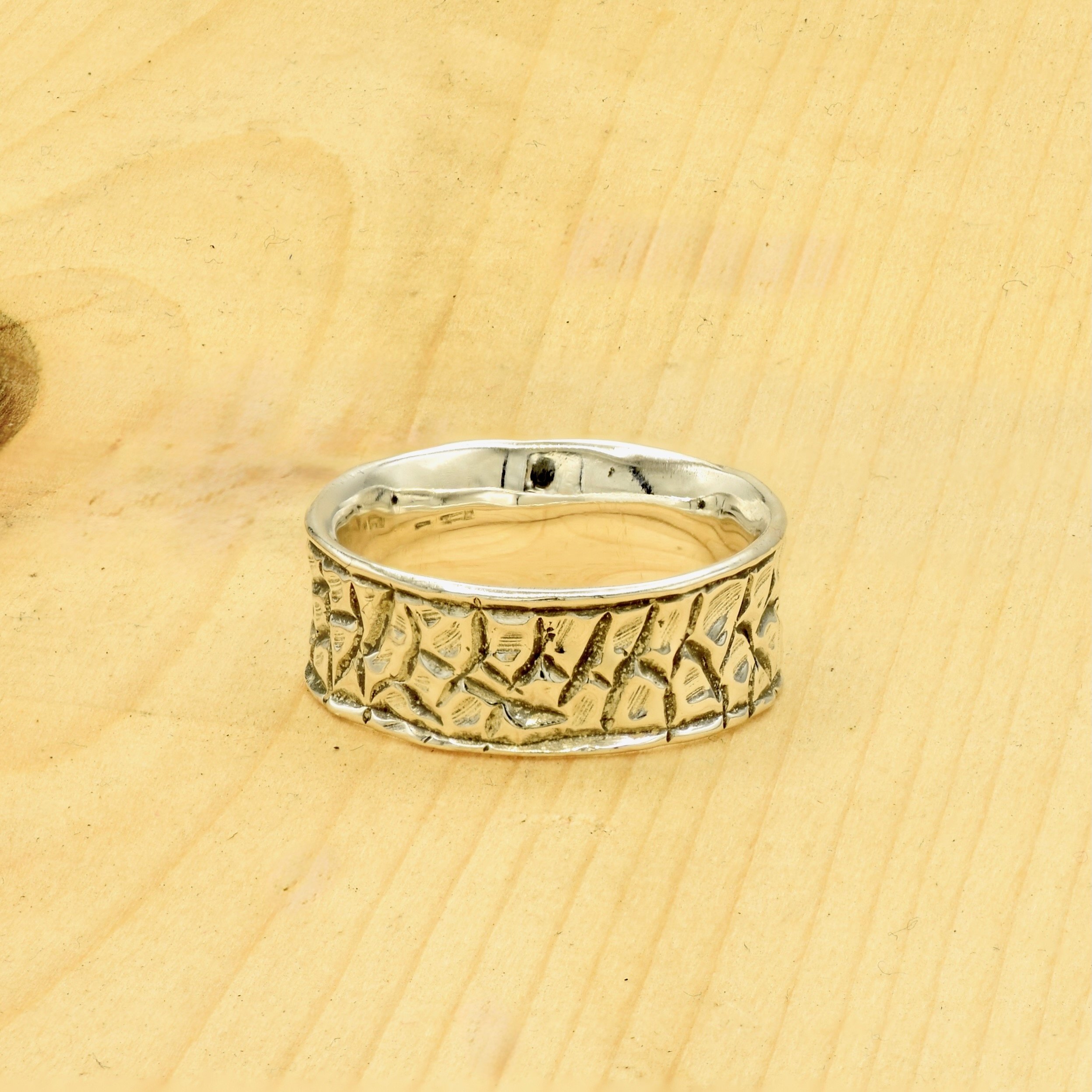 Image 1 of 3
Image 1 of 3

 Image 2 of 3
Image 2 of 3

 Image 3 of 3
Image 3 of 3




Dogwood Bark Ring | (Cornus florida) | Size 7
Carved to resemble the tightly woven crumbles of dogwood bark, we shaped this ring to a comfort fit. The inside is domed which allows it to slide on smoothly and gives the wearer a little breathing room.
Sterling Silver
Size 7, 8mm tall
Wax carving
Instagram or Facebook: @shademetals
Carved to resemble the tightly woven crumbles of dogwood bark, we shaped this ring to a comfort fit. The inside is domed which allows it to slide on smoothly and gives the wearer a little breathing room.
Sterling Silver
Size 7, 8mm tall
Wax carving
Instagram or Facebook: @shademetals
Carved to resemble the tightly woven crumbles of dogwood bark, we shaped this ring to a comfort fit. The inside is domed which allows it to slide on smoothly and gives the wearer a little breathing room.
Sterling Silver
Size 7, 8mm tall
Wax carving
Instagram or Facebook: @shademetals


Bark Patterns
Tree bark patterns are fascinating because they reflect both the tree's biology and its interaction with the environment. Bark serves as a protective covering, helping to shield the tree from pests, diseases, and environmental conditions. The texture and appearance of bark result from the growth and development of the tree's cambium, a layer of tissue beneath the bark responsible for producing new layers of wood and bark annually.
For the flowering dogwood, (Cornus florida) the bark is distinctive, often described as having a "blocky" or "alligator-skin" pattern. It appears in small, irregular, scaly blocks that tend to fissure with age.
Why It Forms:
The blocky texture arises as the tree grows and its outer bark (periderm) splits due to the underlying growth of new tissue.
Dogwoods have relatively thin bark, so the splitting and scaling are adaptations to accommodate growth without overly thickening the bark.
Environmental factors like exposure to sunlight and stress from pests or diseases can exaggerate bark patterns.
Ecological Significance:
The scaly bark provides some degree of camouflage against herbivores.
It also helps regulate moisture retention and provides a substrate for lichens and mosses, supporting local biodiversity.
Specific bark patterns optimize the tree’s survival in its particular ecosystem, they are shaped by evolutionary pressures like climate, predation, and competition.

